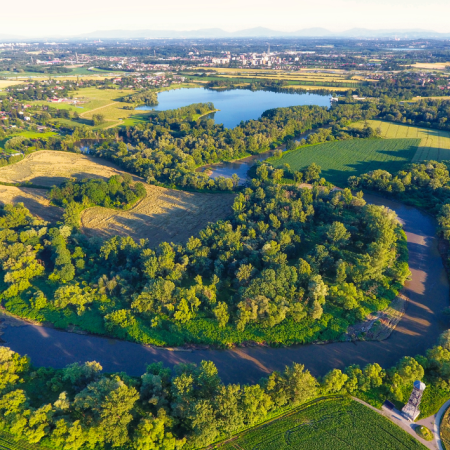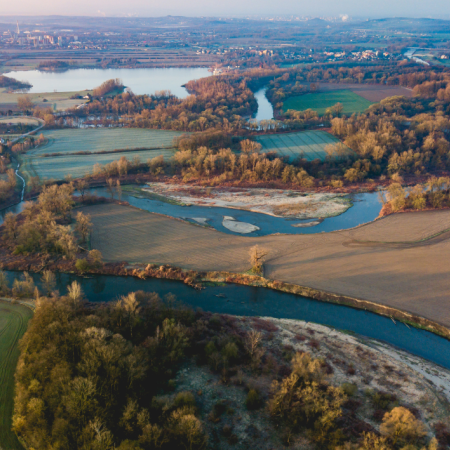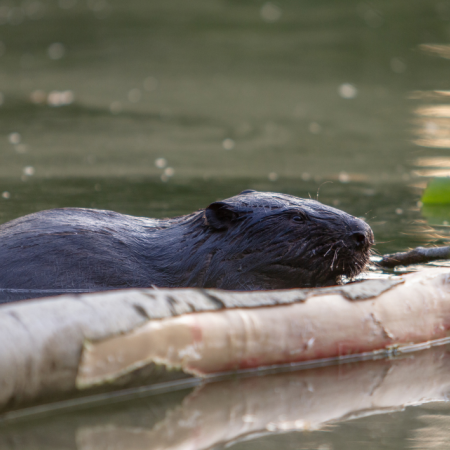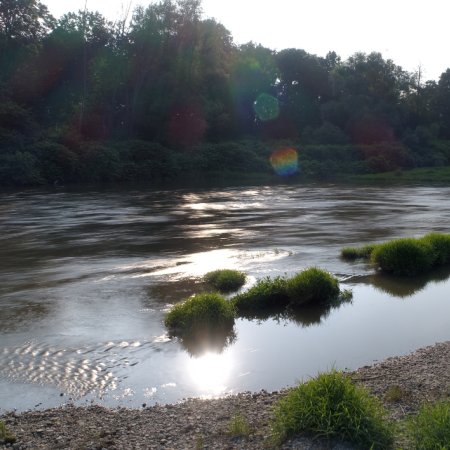- Contrast
- Text
- Scaling
- Content scaling 100%
- Font size 100%
- Line height 100%
- Letter spacing 100%
About the Commune
- Home
- About the Commune
Commune
General information
The Krzyżanowice commune is located in the Racibórz poviat, in the south-western part of the Silesian Voivodeship. It covers an area of 69 km2 and has about 10.9 thousand sq. m. inhabitants. The commune consists of 10 villages: Krzyżanowice, Chałupki, Tworków, Bieńkowice, Bolesław, Owsiszcze, Nowa Wioska, Roszków, Rudyszwałd and Zabełków. From the east, the border of the commune is the Odra River, while from the south-west it borders with the Czech Republic.
The Krzyżanowice commune is a typical agricultural commune. The commune owes its agricultural character primarily to the high bonitation of the soil. This is favored by a mild, moderate climate, shaped by air currents associated with the close vicinity of the Moravian Gate. This type of climate is optimal for agricultural production.
The contemporary Krzyżanowice Commune is a beautiful and well-maintained place, drowning in greenery, which is characterized by:
- numerous road connections with the Czech Republic (A1 motorway)
- proximity to such cities as Racibórz, Rybnik, Bohumin and Ostrava
- developed health care, a network of schools and kindergartens, and administration
- modern sports facilities, and numerous bicycle routes with a total length of approx. 70 km
- a rich ritual year and a calendar of cultural and entertainment events organized in picturesque and appropriately adapted places.
The Krzyżanowice commune creates not only excellent conditions for living, but also for weekend relaxation and investing, so it is worth visiting and getting to know our commune!
History
The lands on the upper Oder date back to the history of the Stone Age. Stone tools dating back to 240,000-180,000 BC were discovered in the Krzyżanowice commune, which are the oldest traces of human presence in present-day Polish lands. The first written records of most of the villages in the Krzyżanowice commune date back to the 12th and 14th centuries.
Over the centuries, the area of the commune belonged alternately to Poland, Bohemia, Habsburgs, Prussia, Germany, and from 1945 again to Poland. The complex history of this land has given it a rich, multicultural character with elements of Polish, Moravian (Czech) and German culture. Due to its location, it was a place of marches of many armies, e.g. Swedish and Danish troops during the Thirty Years' War, but also the march of King John III Sobieski's troops rushing to the rescue of Vienna.
The end of the Silesian Wars and the Seven Years' War (1763) meant that the local lands became part of the Prussian state for a long time.
After World War I, major territorial changes took place. Pursuant to the Treaty of Versailles of 1919, the entire area of the Krzyżanowice commune was covered by a plebiscite. The sympathies of the inhabitants were divided and, by the decision of the winning coalition, all the villages that are today part of today's Commune were granted to the German state. After the area of the Krzyżanowice commune was occupied in April 1945 by the Soviet army and the Czechoslovak armored brigade, these lands were granted to the Polish state. At the beginning, the entire commune belonged to the then Silesian Voivodeship, and in 1950, as a result of the administrative reform, it was included in the newly created Opolskie Voivodeship. Another administrative reform carried out in 1975 makes the Krzyżanowice commune return to the boundaries of the Katowice Voivodeship, and then in 1999 to the Śląskie Voivodship.
Nature
In the Krzyżanowice commune, there are areas protected by the Natura 2000 program (Las Tworkowski and Border Meanders of the Oder River) and numerous historic woodlots, consisting of both single trees and entire complexes, constituting parks around old castles and palaces. In addition to the magnificent trees, particularly impressive erratic boulders, which are the remnants of the glacier, deserve to be called natural monuments.
Meanders of the Oder
The Meanders of the Oder River is a unique area of protected flora and fauna on a European scale, entered into the European network of NATURA 2000 Protected Areas. It is a place where nature has retained its pristine character, and the river bed was shaped by nature, not human activity. You can get to know this extraordinary refuge of nature and its inhabitants both by means of a bicycle path that runs through the entire area, as well as from the perspective of the river, during a canoeing trip or from a 27-meter observation tower.
Odra river
The second largest river in Poland has its source on the south-eastern slope of the Fidlův kopec hill in the Oder Mountains, at an altitude of 634 m above sea level. near the village of Kozlov. The river is 854.3 km long, of which 742 km is in Poland.
Fauna and Flora
The fauna of the Border Meanders of the Oder River is rich in rare and protected animal species. Here you can meet badgers, beavers, golden eagles, kingfishers, tree frogs. In the water itself live fish such as chicks, rhododendrons, mussels and mussels. In the rotten branches of old trees, we can meet the hermit beetle (Osmoderma eremita), which is under strict legal protection and is a priority species of the so-called EU Habitats Directive 92/43/EEC. On the border meanders of the Odra River, there are several rare plant communities that are protected on a European scale, including: riverside forests with black alder and ash, willow and poplar riparian forests and fragments of wet meadows. On the other hand, the protected aquatic plants include, among others: water caltrop, lesser lake water lily, northern water lily, lake relish, umbellate joint and rice moth.
Towns in the Commune
The village is located in the northern part of the Municipality, bordering Raciborz. Bieńkowice was founded at the turn of the 12th and 13th centuries. A typically agricultural village. Worth visiting: the church, the renovated "St. Valentine's Monastery". - now the DFK House of Culture, the cross - a memorial to the fallen inhabitants during the wars, erected in 1871, renovated in 2003, the granary in Pomnikowa Street, the historic blacksmith's shop of Mr and Mrs Socha. The village is known above all for the traditional horse procession during the Easter holidays, ending with races and a service in the local church.
This village is situated in the western part of the municipality. Boleslav was mentioned for the first time in 1377. In the village there is the parish church of St. Jadwiga from 1876. There are also several preserved granaries from the 18th and 19th century. In Boleslav you can cross the border with the Czech Republic. In Boleslav, a water mill from the 16th century has been restored. The mill building from 1819 is suitable for family gatherings, and there are many relics from the past.
The village is located on the left bank of the Oder, at the point where the Oder begins its Polish course. History There was a ducal castle there, guarding the route to Bohemia. In 1862, the existing castle was built, which now houses a restaurant and hotel. In the vicinity of Chałupki and Zabełków, the Odra River forms picturesque and unique meanders. The oxbow lakes formed as a result of a natural process The oxbow lakes created as a result of a natural process are conducive to the creation of new plant and animal habitats: the endangered black poplar grows naturally black poplar grows naturally, the little ringed plover, common snipe, kingfisher and sandpiper nest here. The banks are covered with riparian forests. The Oder Border Meanders are included in the NATURA 2000 European Ecological Network. The Czech-Polish road and railway border crossing is located in Chałupki.
The administrative centre of the municipality of Krzyżanowice. The origins of the village date back to the 13th century. In Krzyżanowice it is worth seeing worth seeing in Krzyżanowice is the Lichnowski Palace, currently the Rose Palace - a Nursing Home owned and run by the Congregation of Franciscan Nuns. owned and run by the Congregation of Franciscan Sisters. In the times of the Lichnowskis, the palace housed, among others, Ludwig van Beethoven and Franz Liszt. The gateway building, built in 1853 in the English Neo-Gothic style, is also of interest. English neo-Gothic style, built in 1853. The chateau park is also worth a visit, with many rare specimens of flora that remember the times of the former times of the former owners and the parish church of St. Anne. Krzyżanowice is also known for its gravel ponds, a popular destination for anglers and those who enjoy encounters with nature.
New Village is the smallest village in the Municipality. The New Village was founded in the 14th century. just small farms, although many more families live there than centuries ago. Due to Due to the proximity of Moravian influences, the people of the village speak an interesting mixture of Silesian and Moravian dialects. Moravian dialect. A beautiful linden avenue leads to the New Village.
Owsiszcze is situated in a picturesque valley surrounded by hills, near the border with the Czech Republic. The village was probably founded in the 14th century. In 1923 the Church of the Sacred Heart of Jesus was built in the village. To commemorate the victims of World War I, the inhabitants of Owsiszcze built a monument on which the names of all those who died were engraved. the names of all those who died. Archaeological investigations have been carried out there in recent years. These followed the discovery of a man-made fist from the Stone Age in the Owsiszcze area. Stone Age. This flint tool was used by our ancestor some 250-200 thousand years ago. In Owsiszcze there is a former border crossing to the Czech Piště.
Roszków is a small village with an agricultural character, located south of Krzyżanowice. The village The excavations of the Roszków gravel pit still reveal interesting historical "treasures", For example, trunks of black oak trees with a circumference of 600-700 cm have been found there, as well as the remains of fossil animals, including mammoths, which have been found in the area. including mammoths, which lived in the area and became extinct 10,000 years ago. The inhabitants of Roszków currently form a very close-knit and integrated local community.
Rudyszwałd was established at the turn of the 13th and 14th centuries, originally recorded as Rudolf's Forest. To this day, on the border between Rudyszwałd and Zabełków a penitential sandstone cross from the 14th-16th century has also been preserved. The present Holy Trinity Church was built in 1935. In Rudyszwałd there are two border crossings with the Czech Republic - to Szylerzowice and Haci.
Tworków is known for its remarkable historical past, which was influenced by such well-known figures as: Rev. Dr. Augustyn Weltzel, Blessed Rev. Emil Szramek, Rev. Jozef Gregor, or the writer Ludwik Bielaczek. The village was first mentioned The village was first mentioned in 1350, but its origins probably date back to 1258. In the 14th century the Church of St. Peter and St. Paul was built, which was later rebuilt in the 18th and 19th centuries. During renovation work at the end of the 20th century in the church During renovation work at the end of the 20th century, crypts with historic sarcophagi of the Reiswitz family, more than 300 years old, were discovered in the church. The parish church in Tworków is one of the most important works of Baroque architecture in the Racibórz region, with a unique in Europe's unique exhibition of over a dozen ornate coffins and robes. The oldest fragments of the castle, built in the Gothic style, date back to the 14th century. built in the Gothic style, which was extended around the 16th century, changing its style to Renaissance. In January 1931 the roof of the Twórków castle burnt down, and further damage was caused during World War II. World War II. Today, what remains of the castle are the picturesque ruins revitalised in 2020, in which the castle tower a 21-metre-high viewing platform has been built into it, and the whole thing has been secured so that tourists can safely explore the grounds.
Zabełków is located in the southern part of the village and was founded in the 14th century. In 1937 the church of St. Jadwiga was built in the village. St. Hedwig's Church was built in the village in 1937. The only thing preserved from the history of the village is a neo-Gothic cross from 1866 in the Zabełków cemetery, a neo-Gothic cemetery cross from 1897 and a monument to those killed in World War I from 1919. In the vicinity of Zabełków and Chałupki, the Odra River forms picturesque and unique meanders. The oxbow lakes created as a result The oxbow lakes created as a result of a natural process are conducive to the creation of new habitats for plants and animals: the endangered black poplar grows naturally, and the little ringed plover, common snipe, kingfisher and sandpiper nest here. The banks are covered with riparian forests. The meanders of the Oder River are included in the NATURA 2000 European Ecological Network. From Zabełków, the Meanders can be visited from a 27-metre-high observation tower.
Hać is located in the northeastern part of the Opava district, at the foot of Hulčín Hill. The eastern and northern border of the village is also the state border with Poland. The village was first mentioned in 1250. One of the most important monuments of the village is St. Matthew's Church, built in 1731. One of the most important monuments in the village is St. Matthew's Church, which was built in 1731 in the Baroque style and was rebuilt in 1894. There is also a massive white marble cross in the village, which commemorates the 76 Háček and 27 Darkovice men killed during World War I.
Pist is situated in a valley that reaches the state border to the north and a forest range to the south. The village is one of the oldest villages in the Opava region. The first written mention dates back to 1228. a new church dedicated to St. Lawrence was built on the foundations of the old church. The new church, dedicated to St. Lawrence, was built on the foundations of the old church in 1743. by Pope John Paul II. This church, together with the surrounding Way of the Cross, is a pilgrimage site. There are also also a swimming pool, miniature golf and a recreational sports area.
Szilerzovice is located on the Hulčín Hills, in its eastern part, near the border with Poland. The village was founded around the middle of the 13th century and was surrounded by dense forests. In 1713 a Roman-Catholic church was built in Šlerzovice. Roman-Catholic Church of the Assumption of the Virgin Mary was built in Šilberzovice in 1713. There is also castle formerly belonging to the Rotschild family, which was built between 1787 and 1815, standing amidst a 98-hectare English park. There is an 18-hole golf course in the extensive parkland around the castle. There are also two nature reserves here: the so-called Black Forest I and Black Forest II. Šilerzovice also has accommodation for tourists and restaurants.
The town of Bohumín is located in the industrial zone of the Moravian-Silesian Region north-east of Ostrava, on the border with Poland. east of Ostrava, on the border with Poland, at the confluence of the Oder and Olše rivers. This location gives the town an important position in the field of international transport and industry, and its scenic location makes it an interesting tourist destination, makes it an interesting tourist destination. The biggest attraction for visitors is a charming natural monument in the form of an eight-kilometre-long meandering course of the Oder River, as well as a unique sports and leisure area with a swimming pool, adventure golf, children's amusement park and maze.
Tourist attractions
-
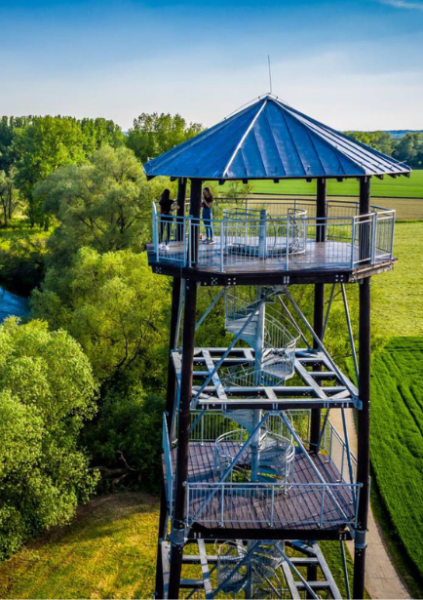 Polish attractions
Polish attractionsViewing tower at the Meanders
-
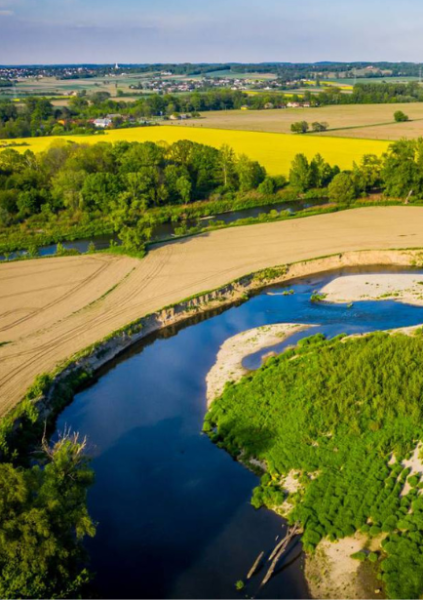 Polish attractions
Polish attractionsBorder Meanders of the River Oder
-
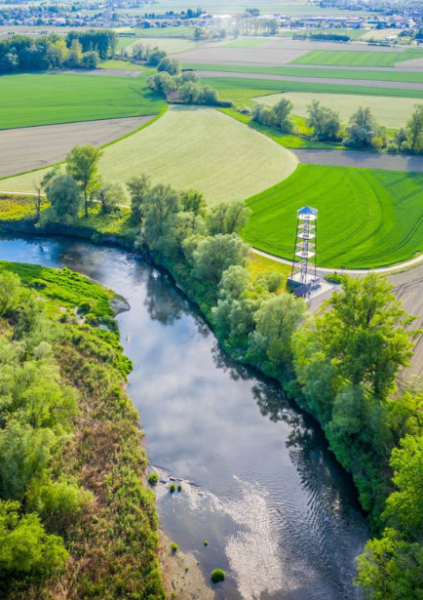 Polish attractions
Polish attractionsViewing tower at the Meanders
-
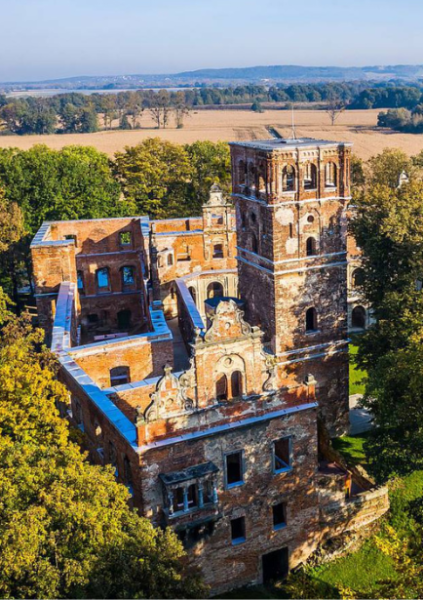 Polish attractions
Polish attractionsThe castle ruins in Tworków
-
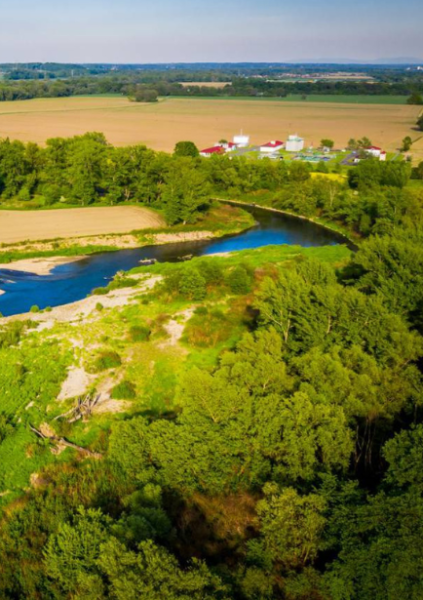 Polskie atrakcje
Polskie atrakcjeBorder Meanders of the River Oder
-
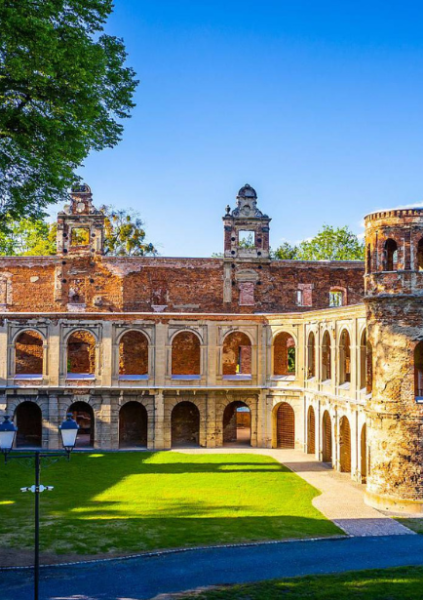 Polish attractions
Polish attractionsThe castle ruins in Tworków
-
 Polish attractions
Polish attractionsBorder Meanders of the River Oder
-
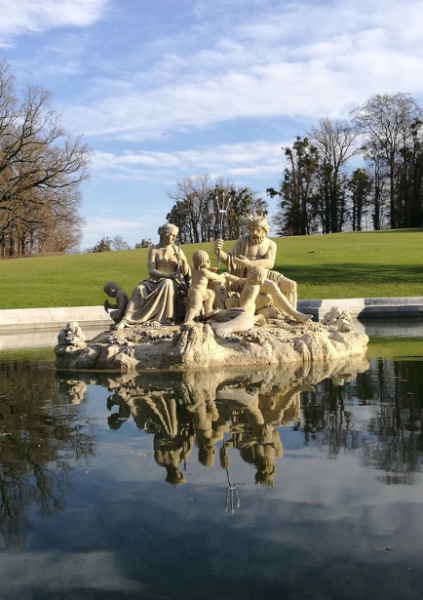 Czech attractions
Czech attractionsFountain in front of the castle

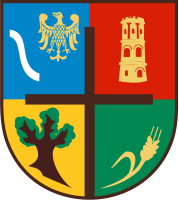
Główna Street 5,
47-450 Krzyżanowice
fax. (32) 419 42 34
e-mail:
-
Pn – Śr7.00 – 15.00
-
Czw8.00 – 17.00
-
Pt7.00 – 14.00
Copyright © 2024 Wszelkie prawa zasteżone.
Projekt i realizacja. Strony WCAG dla instytucji - itee.pl





